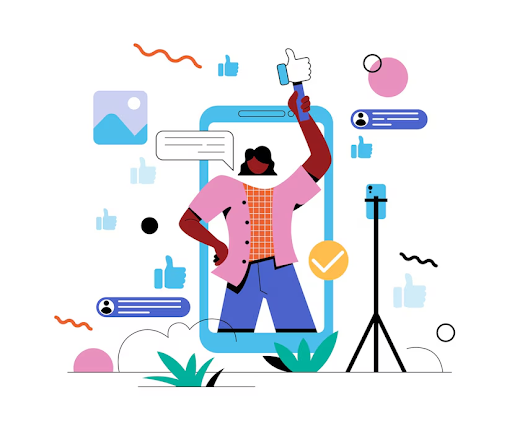
Over the last ten years, the fashion and beauty sectors have experienced a significant change. Newer techniques that exploit social media and digital narratives have replaced conservative promotional methods. Influencer partnerships and brand narratives are the pioneers of this shift, they enable brands to reach out to their customers effectively.
The Rise of Influencer Marketing
In the rapid transformation of famousness and good appearance advertisements, influencer marketing has become very important. What is done here is collaboration with people within the social media world who command notable followings to promote certain items from different companies. What attracts people is their ability to attract the attention of specialized customers through genuine talk hence making them buy more.
Popular figures on social media can be used by marketers to attract their target demographic in a way that can create trust and authenticity that may be missing from traditional advertising methods, all this is achieved through a process where every marketing message tailored to individuals makes such individuals feel connected thereby increasing market share, trust and conversion rates for the company.
Trends in Influencer Collaboration
Micro-Influencers: Micro-influencers seem to be replacing mega-influencers, who previously were a major target for many brands. What micro-influencers offer brands are tighter-knit but smaller groups of followers who connect better with customers in a more genuine manner.
Authenticity and Transparency: Modern consumers value honesty and transparency. Brands and influencers are increasingly focusing on authentic collaborations that resonate with their audience’s values and lifestyles.
Emerging Platforms: Platforms like TikTok and Instagram Reels are gaining popularity for influencer collaborations. These platforms offer creative and engaging ways to showcase products and connect with younger audiences.
Innovations in Brand Storytelling
Effective brand storytelling is crucial in the fashion and beauty sectors. It goes beyond traditional advertising by creating an emotional connection with consumers. Here are some innovative techniques:
- Compelling Narratives: Brands are crafting stories that align with their values and resonate with their target audience. For example, Glossier’s “Skin First, Makeup Second” campaign emphasizes natural beauty and self-confidence, appealing to a broad audience.
- Case Studies: Brands like Nike have mastered the art of storytelling. Their campaigns often highlight real-life stories of athletes overcoming challenges, which inspire and connect with their audience on a deeper level.
- User-Generated Content: Encouraging customers to share their own stories and experiences with products adds authenticity and credibility to a brand’s narrative. This strategy not only builds community but also generates valuable content for marketing.
The Integration of Technology
Technology is playing a significant role in revolutionizing fashion and beauty marketing:
- AI and AR: Artificial Intelligence (AI) and Augmented Reality (AR) are transforming the shopping experience. AI-powered chatbots provide personalized recommendations, while AR allows customers to try on products virtually, enhancing convenience and satisfaction.
- Virtual Try-Ons and Fashion Shows: Virtual try-ons enable customers to see how products look on them before making a purchase. Virtual fashion shows have become a popular way to showcase new collections, especially during the pandemic.
- Consumer Engagement: These technologies not only enhance the shopping experience but also drive consumer engagement and increase sales.
Leveraging Data and Analytics
Data and analytics are crucial for optimizing influencer collaboration and brand storytelling strategies. By analyzing data, brands can gain insights into what works and what doesn’t, allowing them to refine their approaches.
- Performance Metrics: Tracking performance metrics such as engagement rates, click-through rates, and conversion rates can help brands measure the effectiveness of their influencer campaigns. This data can be used to identify high-performing influencers and optimize future collaborations.
- Audience Insights: Understanding the audience is key to effective marketing. Brands can use data analytics to gain insights into their audience’s preferences, behaviors, and demographics. This information can inform both influencer selection and content creation, ensuring that the brand’s message resonates with its target audience.
- A/B Testing: A/B testing involves comparing two versions of a piece of content to see which one performs better. Brands can use this technique to test different elements of their storytelling and influencer campaigns, such as messaging, visuals, and call-to-actions, to determine the most effective approach.
Conclusion
Influencer collaboration and brand storytelling are essential strategies for fashion and beauty marketing. By staying ahead of the latest trends and innovations, brands can effectively engage with their audiences, build strong relationships, and drive growth. Whether it’s through leveraging micro-influencers, creating interactive content, or using data to optimize strategies, the key is to remain authentic and connect with consumers on a deeper level. As the industry continues to evolve, those who adapt and innovate will undoubtedly stand out in the competitive Market.


